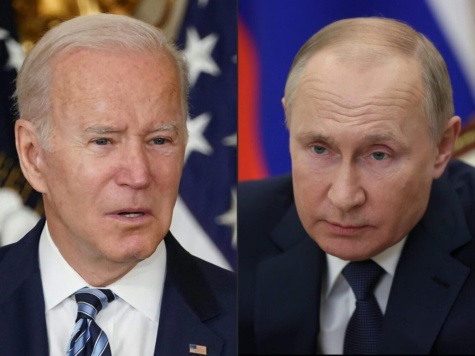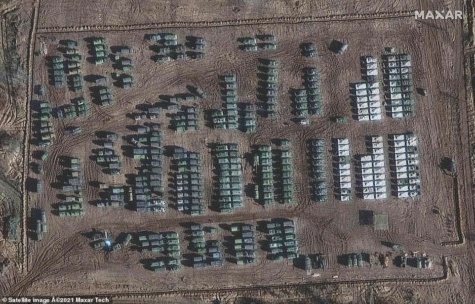
Shayna Sparks | News Editor
December 10, 2021
On Tuesday, December 7, President Joe Biden held a video conference with Russian President Vladimir Putin. The call lasted two hours, and the main topic of discussion was the threat of a possible Russian invasion of Ukraine. The United States and its European allies are bracing for conflict, preparing to assist Ukraine in order to preserve its independence.
Currently, an estimated 175,000 Russian troops are lining up along the Ukrainian border, and Russia is preparing supply lines to support long-term conflict in Ukraine. It is believed that Putin hasn’t yet decided whether to invade Ukraine or not. Yury Ushakov, Putin’s aide, denied all allegations of a planned invasion, claiming that NATO is threatening Russia over a nonexistent issue.
The United States can take two possible actions in response to Russia’s threat of invasion. The first, according to National Security Advisor Jake Sullivan, is to focus on “de-escalation and diplomacy” to resolve the issue before it causes international conflict. Ideally, this would result in dissuading Russia from annexing Ukraine, eliminating the need for economic or military action by other countries. The second option, if Russia does invade Ukraine, is to impose economic sanctions in an attempt to cripple the Russian economy. The United States and its NATO allies have also promised to assist Ukraine with supplies for defense if Russia invades. On the other side of the issue, Russia wants NATO to promise not to expand eastward into Ukraine, an agreement which most NATO countries are not in favor of.
“I think that Ukraine represents democracy’s victory over the communist Soviet Union,” senior Seth Hahn said. “In my opinion, some sort of strong intervention would be a good thing.”
President Biden promised that the potential sanctions on Russia would be stronger than those imposed in 2014 by the United States and the European Union in collaboration with other countries and organizations. These sanctions were imposed in response to the Russian annexation of Crimea, which was part of Ukraine at the time, and they contributed to an economic crisis in Russia that lasted from 2014 to 2016. However, Russia responded with its own sanctions, even going so far as to prohibit all food imports from the United States, the European Union, Australia, Canada, and Norway.

Another possible course of action against Russia is the Nord Stream 2 Pipeline. The pipeline would transport natural gas directly from Russia to Germany, a major consumer of Russian natural gas. The pipeline was recently constructed, but it still must be certified by the German government before it can operate. If Russia invades Ukraine, Germany may withhold this certification, preventing the pipeline from transporting Russia’s product. However, the United States does not support this pipeline, so this response would be in the hands of the German government only.
The final and most drastic measure against Russia would be removing the nation from the SWIFT system. The Society for Worldwide Interbank Financial Telecommunications works as a messaging system for financial institutions, relaying international monetary transfers. A similar strategy was implemented in 2012 when Iranian banks were removed from the SWIFT system. This caused the value of Iranian currency to drop drastically. However, Russia has been threatened with removal from SWIFT before, so it created SPFS (System for Transfer of Financial Messages) as a backup in 2014. Compared to SWIFT, SPFS is more expensive and only works within Russia, but it has the potential to expand to other countries in the future.
After the video call with Putin, President Biden discussed the future course of action with Mario Draghi, Boris Johnson, Emmanuel Macron, and Angela Merkel (leaders of Italy, England, France, and Germany, respectively).
“I think that Biden should wait and see if the threat is valid,” sophomore Sophia Sparks said. “If it’s real, diplomacy should be the strategy used to diffuse the situation, and brute force should not be used unless absolutely necessary.”
Whichever decision the United States and its allies make, they must be prepared to respond quickly to the decisions of Russian leadership. The autonomy of Ukraine will be either preserved or lost depending on the actions of Russia and of Ukraine’s allies.

Leave a Reply